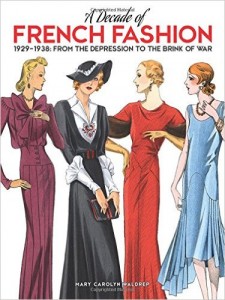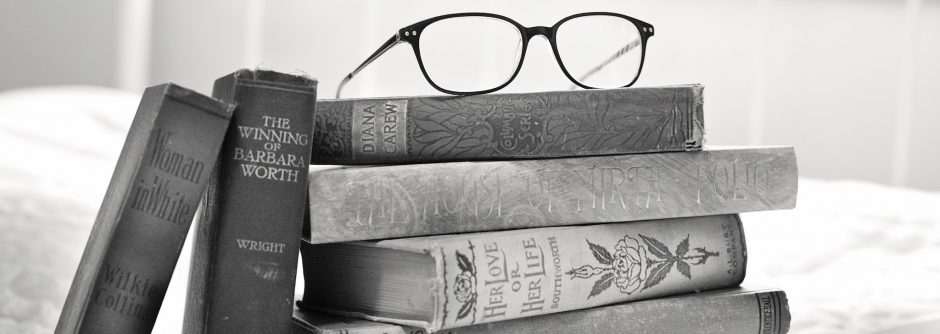A Decade of French Fashion, 1929-1938: From the Depression to the Brink of War
Edited By: Mary Carolyn Waldrep
Rating: 5 of 5
 Dover has done it again! They are fantastic at reprinting antique crafts patterns and other out of print but fascinating publications. In “A Decade of French Fashion, 1929-1938”, they have brought together a select group of fashions from various fashion magazines of the time period.
Dover has done it again! They are fantastic at reprinting antique crafts patterns and other out of print but fascinating publications. In “A Decade of French Fashion, 1929-1938”, they have brought together a select group of fashions from various fashion magazines of the time period.
I am a needlework designer and I do some period piece designs. I look to Dover for inspiration and so that my designs accurately depict the styles of the proper period. I had been hoping for a set of designs that covered, essentially, the Great Depression, for a series that of cross stitch that I have in mind. This is the perfect book for me. It shows fashions just before the Crash hit through just before World War II.
It is really interesting to note that the fashions for women changed dramatically when times got tough. The look of the 1920’s – with shorter skirts, bare arms, and a lack of emphasis of the female form (including flat bodices without darts), to shapes that, while they covered women more, emphasized a bit of the hour-glass shape. Thank goodness, the bustle and the corset were gone, but the look was still hour-glass but with widened shoulders and belted waistlines.
These are the fashions that I think of when I think of the era of glamour in Hollywood – Fred Astaire and Ginger Rodgers, Katherine Hepburn, and so many more.
At the same time, there is a look among the daytime dresses of durability and a lack of “trendiness” as one would have to make do with ones clothes for a good period of time and be able to re-work them as they started to fray. I wonder if having more length to the skirt was part of this? You could reduce the hem length and have some material for patching, if necessary.
On a personal note, this is the period when my late mother was a young to teenage girl. I’m sure she would yearn for clothes like these at the movies and magazines. As a poor mountain girl in the Blue Ridge Mountains just outside of Asheville, North Carolina, she got to see the really rich (the Vanderbilts at the Biltmore Estate, etc.) but lived in a one bedroom cabin with her many other siblings. Fashion was not for her at that point – just having shoes was something that she didn’t always have. Looking at the fashions made me think of her as a young girl longing for something more and I certainly shed more than a few tears.
I received a digital ARC copy of this book from the publisher, Dover Publications, via Netgalley.
 Dover has done it again! They are fantastic at reprinting antique crafts patterns and other out of print but fascinating publications. In “A Decade of French Fashion, 1929-1938”, they have brought together a select group of fashions from various fashion magazines of the time period.
Dover has done it again! They are fantastic at reprinting antique crafts patterns and other out of print but fascinating publications. In “A Decade of French Fashion, 1929-1938”, they have brought together a select group of fashions from various fashion magazines of the time period.